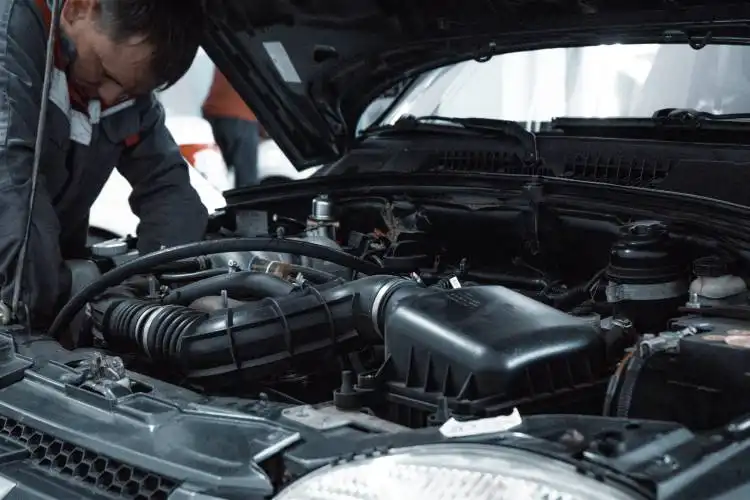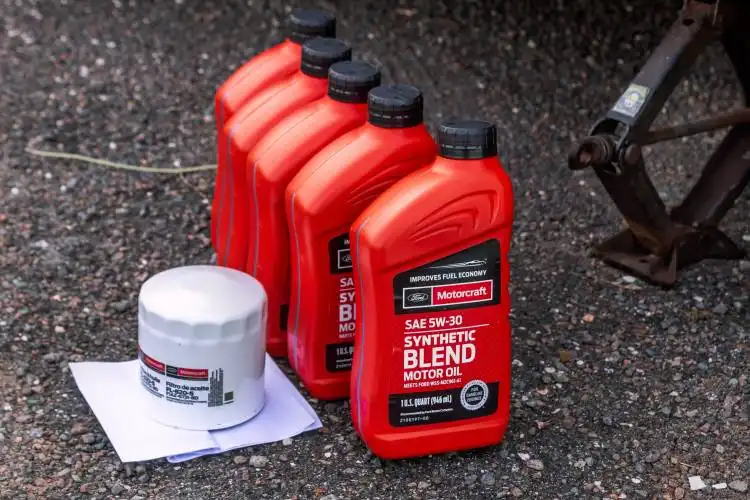Start a Bike Repair Business
Biking Your Way to Entrepreneurship: Starting a Heartwarming Bike Repair Business
| Updated


BIKE REPAIR BUSINESS
Planning to set your foot in the world of entrepreneurship? Consider the wheely-great idea of a Bike Repair Business! This venture will see you tinkering and mending everything from loose chains to worn-out brake pads, bringing jaded two-wheelers back to life. It's about more than giving a bike a new lease of life - it's about becoming a trusted mechanic in the community, always ready to save the day when a cyclist is in distress. Go ahead – let your entrepreneurial journey find its pedals with this hands-on, heartwarming business.
Jump to Business Plan
RELATED BUSINESS IDEAS
Browse ALL Cars & Transportation Solutions Business Ideas
Discover Your Perfect Domain
Unlock the door to your online success with our hand-picked selection of premium domain names. Whether you're starting a new venture or rebranding an existing one, the right domain can set the tone for your digital presence. Browse through our curated list, each with its unique potential to enhance your brand's visibility and credibility.
BIKE REPAIR MINI BUSINESS PLAN
This a quick reality check to help you identify the strengths and weaknesses of your business concept before you dive in.
Expected Percent Margins:
- Gross Margin: 40-60%. This depends largely on labor cost control and supply procurement.
- Net Profit Margin: 10-30%. Factors such as overheads, operating costs, and other operational expenses also play a role here.
Earnings Expectations:
- Daily Earnings: $100 - $300
- Weekly Earnings: $700 - $2100
- Monthly Earnings: $3,000 - $9,000
- Annual Earnings: $36,000 - $108,000
Please note that these numbers are dynamic and largely dependent on local populations, bike culture, competition, and seasonal variations.
Actions to Hit Those Numbers:
Skill Development and Staffing:
- Staff Skills: Hire skilled staff and invest in their training.
- Staffing: Depending on demand, you might require 1-3 bicycle mechanics.
Services and Pricing:
- Core Services: Offer a range of services - from quick repairs to comprehensive overhauls.
- Pricing: Ensure pricing covers costs and is competitive in the market.
Marketing and Customer Acquisition:
- Local Outreach: Advertise in local newspapers, community events, and via targeted social media ads.
- Partnerships: Collaborate with local bike clubs and organizations for business referrals.
Supply Chain Management:
- Sourcing: Find reliable suppliers for bike parts and negotiate volume discounts.
- Inventory: Keep a well-managed inventory of fast-moving parts.
Shop and Operations:
- Shop Location & Facilities: Establish your shop in a bike-friendly location with adequate space for work and customer interaction.
- Hours of Operation: Ensure you're open during peak hours and days as per local requirements.
Remember, every business is unique and your specific situation may call for different strategies or expectations.
NOT WHAT YOU HAD IN MIND? Here are more ideas



Browse ALL Cars & Transportation Solutions Business Ideas
Grab Your Business Website Name
Before you get caught up in the whirlwind of setting up your business, invest in a domain name. It's a small but significant step that lays the foundation for your brand and makes it easier for customers to find and trust you. Just like you wouldn't build a house without securing the land first, don't build a business without securing your domain name.
"Why? Can't that wait?" Here's why it shouldn't
Step 1: Determine if the Business is Right for You
Breakdown of Startup Expenses
Starting a bike repair business requires a significant investment of both time and money. Before deciding to start a business, it is important to understand the costs associated with it. The startup expenses for a bike repair business can include the cost of purchasing or leasing a workspace, purchasing tools and supplies, obtaining any necessary licenses and permits, and hiring employees. Additionally, it is important to consider the cost of marketing and advertising to help the business get off the ground.
Breakdown of Ongoing Expenses
Once the business is up and running, there are ongoing expenses that must be taken into account. These can include the cost of supplies, such as replacement parts and tools, as well as the cost of labor. Additionally, there may be costs associated with maintaining the workspace, such as rent or utilities. It is important to consider all of these costs when determining if a bike repair business is the right venture for you.
Examples of Ways to Make Money
There are several ways to make money with a bike repair business. One of the most common ways is to charge for services rendered. This can include charging for labor, parts, and any additional services, such as bike tune-ups or repairs. Additionally, a bike repair business can also make money by selling parts and accessories, such as bike helmets, lights, and locks. Finally, a bike repair business can also make money by offering bike rentals or bike tours.
Step 2: Name the Business
When it comes to naming a business, it's important to choose something that is memorable and reflects the nature of the business. It should also be easy to pronounce and spell. Some tips for choosing a name include:
Brainstorming: Take some time to brainstorm potential names for the business. Consider words that are related to the business, such as “bike” or “repair”, or words that reflect the desired image of the business, such as “professional” or “reliable”.
Research: Once you have a few potential names, research them to make sure they are not already in use. It is important to make sure the name is not trademarked or copyrighted by another business.
Test it Out: Once you have a few potential names, test them out by asking friends and family for their opinion. This can help you narrow down the list and choose the best name for the business.
Consider the Future: When choosing a name, it is important to consider how it may evolve with the business. It should be flexible enough to accommodate potential changes in the future.
Make it Unique: Finally, make sure the name is unique and stands out from other businesses in the same industry. This will help the business to stand out and be memorable.
Step 3: Obtain Licensing and Insurance
In order to legally operate a bike repair business, you will need to obtain the necessary licensing and insurance. Depending on the state you are in, you may need to obtain a business license, a sales tax license, and a general liability insurance policy. You may also need to register your business with the local government or the state government. Additionally, you may need to obtain a zoning permit if you plan to operate your business from a commercial space.
Cost of Licensing and Insurance
The cost of licensing and insurance for a bike repair business will vary depending on the state and local regulations. Generally, the cost of a business license will range from $50 to $100. A sales tax license may cost up to $50. A general liability insurance policy will cost anywhere from $500 to $1,000 per year. Additionally, you may need to pay a fee to register your business with the local or state government. Finally, a zoning permit may cost up to $200.
Where to Obtain Licensing and Insurance
You can obtain the necessary licensing and insurance for your bike repair business from your local government or state government. Additionally, you can contact an insurance broker to help you find the right insurance policy for your business. Finally, you can contact a lawyer to help you understand the legal requirements for your business.
Step 4: Create a Business Plan
Creating a business plan is an essential step in starting a bike repair business. The plan should include an outline of the business, including the services offered, the target market, the pricing structure, and the marketing plan. It should also include a financial plan that outlines the startup costs, ongoing expenses, and projected income.
Writing the Business Plan
Once the outline of the business plan is complete, it's time to start writing the plan. This should include a detailed description of the services offered, the target market, the pricing structure, and the marketing plan. It should also include a financial plan that outlines the startup costs, ongoing expenses, and projected income. Additionally, it should include a timeline for launching the business, a plan for managing the business, and a plan for expanding the business.
Seeking Professional Help
Writing a business plan can be a daunting task, and it's important to get it right. If you're not comfortable writing a business plan, it's a good idea to seek professional help. Professional business plan writers can help you create a comprehensive plan that outlines the services offered, the target market, the pricing structure, and the marketing plan. They can also help you create a financial plan that outlines the startup costs, ongoing expenses, and projected income.
Step 5: Secure Financing
Securing financing is an important step in starting a bike repair business. There are a variety of sources of financing available, including personal savings, bank loans, venture capital, and crowdfunding. Personal savings are the most common source of financing for small businesses, but it is important to consider all available options. Bank loans can be a good option for those with a good credit history, while venture capital and crowdfunding can be a great way to raise capital quickly.
Calculate Costs
Before securing financing, it is important to calculate the costs associated with starting and running a bike repair business. This includes startup costs such as purchasing tools and equipment, renting a space, and hiring employees. It also includes ongoing costs such as rent, utilities, insurance, and advertising. Knowing these costs will help you determine how much financing you need and what sources of financing are available to you.
Create a Business Plan
Creating a business plan is an important step in securing financing. A business plan should include information about the company, the market, the competition, and the financials. It should also include information about the products and services you will offer, your marketing strategy, and your growth plans. A business plan is essential for convincing potential investors that your bike repair business is a good investment.
Apply for Financing
Once you have calculated your costs and created a business plan, you can begin applying for financing. It is important to research the different financing options available to you and to compare the terms and conditions of each. When applying for financing, make sure to provide all the necessary documents and information. It is also important to be prepared to answer any questions potential lenders may have.
Step 6: Find a Location
Finding the right location for a bike repair business is essential for success. It should be in a place that is easily accessible to customers and has enough space for the business to operate. The location should also be in a place that has a high concentration of cyclists, such as a bike trail or a city with a large cycling community. Additionally, the location should have adequate parking for customers and enough space for the business to store tools and parts.
Leasing or Purchasing a Location
Once the ideal location is identified, the business owner must decide whether to lease or purchase the property. Leasing a location can be less expensive in the short-term, but it can also be more expensive in the long-term. Purchasing a location can be more expensive upfront, but it can also be more cost-effective in the long run. The business owner should also consider the cost of any necessary renovations or repairs that may be needed to make the location suitable for a bike repair business.
Obtaining Necessary Permits
The business owner must also obtain any necessary permits or licenses to operate a bike repair business in the chosen location. This may include a business license, zoning permits, and any other permits required by the local government. Additionally, the business owner should research any regulations or restrictions that may be in place for the chosen location.
Securing Insurance
Finally, the business owner should secure insurance for the bike repair business. This will protect the business from any potential liabilities and ensure that the business is compliant with any local or state regulations. The business owner should also consider any additional insurance coverage that may be necessary for the business, such as liability insurance for customers or coverage for any tools or equipment used in the business.
Step 7: Purchase Equipment
When starting a bike repair business, it is important to have the right equipment. This includes tools for repairing bikes, such as wrenches, screwdrivers, and pliers. It is also important to have a workbench and a toolbox for storing tools. Additionally, you may need to purchase a bike stand, a bike pump, and a bike rack. Depending on the type of repairs you plan to do, you may need to purchase additional specialized tools.
Where to Purchase Equipment
When purchasing equipment for your bike repair business, you have several options. You can purchase new equipment from a local bike shop or online. You can also purchase used equipment from online classifieds or second-hand stores. Additionally, you may be able to find used equipment from other bike repair businesses that are closing or downsizing.
Cost of Equipment
The cost of equipment for a bike repair business can vary greatly depending on the type of equipment you purchase. Basic tools, such as wrenches and screwdrivers, can be purchased for a relatively low cost. However, specialized tools can be quite expensive. Additionally, you may need to purchase additional items, such as a bike stand, bike pump, and bike rack, which can also add to the cost.
Financing Options
If you need to finance the purchase of equipment for your bike repair business, there are several options available. You may be able to qualify for a business loan from a bank or credit union. Additionally, you may be able to find financing through a vendor or supplier. Finally, you may be able to use a credit card to finance the purchase of equipment.
Step 8: Market the Business
Once the bike repair business is up and running, it is important to market the business to potential customers. Examples of ways to market the business include creating a website, using social media, and participating in local events. Creating a website is a great way to showcase the services offered and provide potential customers with information about the business. Social media is also a great way to reach potential customers and build a following. Participating in local events such as bike races and bike festivals is also a great way to get the word out about the business.
Tips for Effective Marketing
When marketing the business, it is important to be consistent and creative. Consistency is key when it comes to marketing, as it helps to build a recognizable brand. It is also important to be creative and think outside the box when it comes to marketing. This can include creating unique content, offering discounts and promotions, and engaging with customers on social media. Additionally, it is important to track the effectiveness of the marketing efforts to ensure that the business is getting the most out of its marketing budget.
Step 9: Hire Employees
When it comes to hiring employees, it is important to consider the skills and experience they can bring to the business. It is also important to consider the cost of hiring employees, as this can add to the overall cost of running the business. When hiring employees, it is important to consider the type of work they will be doing and the hours they will be working. It is also important to consider the legal requirements for hiring employees, such as minimum wage and other labor laws. Additionally, it is important to consider the cost of providing benefits to employees, such as health insurance, vacation time, and other benefits. Finally, it is important to consider the cost of training and onboarding new employees.
EXPLORE MORE CATEGORIES
Browse ALL Business Idea Categories
TAKE THE NEXT STEPS










